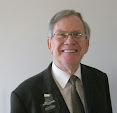Maps and the Seven Mile Rule
I find maps really useful for solving genealogy mysteries. For example, "Which is most likely to be the marriage or christening of my ancestor?"
A few years ago I read a Dear Myrtle's Blog posting that explained 'the 7 mile rule'. In rural areas in the 1800s, a young man had farm chores to do. He might get a few hours off to go courting, but he needed to be home in time for the evening chores. His usual mode of travel would be on foot, where his speed would be about 2.5 miles (4 km) per hour. This means that he usually had to find a bride within a distance of roughly 7 miles. So if the young man lived in a known location, his sweetheart probably lived within a 7 mile radius, and probably close to one of the few roads connecting the two points.
In reality, we know that love is not completely confined to elementary cartography. In some places there were other modes of transportation that would expand the range. In fact my grandmother lived in London, England, when she accepted a marriage proposal (by letter) from my grandfather who lived in western Canada, nearly half a world away! But generally the 7 mile rule is a useful guideline.
I often use Google maps (https://www.google.ca/maps or https://maps.google.com) to determine the distance between two points. The fact that the birth takes place in one county and the marriage of someone by that name occurs in the same county does not tell me how close the two places are. I need a map. I frequently use Google maps for that purpose. It is instantly accessible, and clicking Directions allows me to put in the names of the two places, to automatically calculate the distance and route between them.
But Google maps show an area as it is today, not as it was in 1863 or some other time in the past. This is where old maps really shine. On a recent podcast, Lisa Louise Cooke spoke about old maps and recommended a site http://www.oldmapsonline.org/ I like checking out old maps. Most of them seem to be in areas I am not researching, but sometimes I get lucky. The first thing I noticed was a 1948 map of Alberta, including many places that no longer exist, and are probably omitted from online maps! You may find the old maps useful too.


1 Comments:
Hi Bill,
Thanks for the tips. Shared on our Society's Facebook page (https://www.facebook.com/pages/East-European-Genealogical-Society/155052604506503)
Chris Bukoski
Post a Comment
<< Home